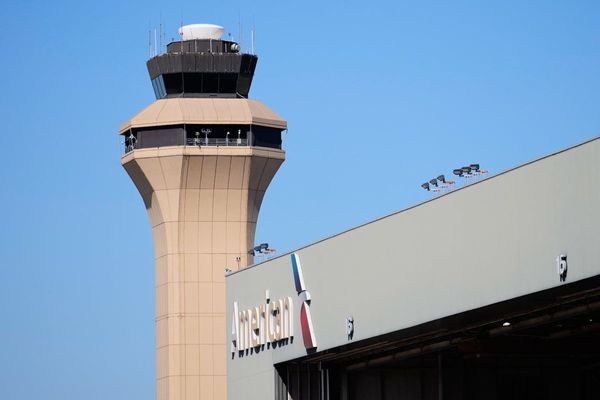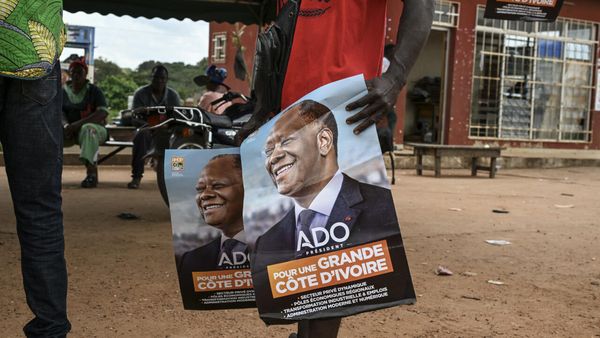We all knew that there were political tensions. Yet none of us believed it enough to change our plans or everyday routines. None of us expected fighting to erupt. It was December 15 2013, and I was in South Sudan. Like many people there, I was distracted by plans for Christmas – what food would we eat, what plane would I take home. Then fighting erupted in the capital between factions of South Sudan’s army. Familiar busy streets emptied to become a frightening, militarised landscape.
As governments struggle to get their citizens out of Sudan’s capital Khartoum after two weeks of fighting that left hundreds dead, a friend and I have been exchanging messages about our memories of the 2013 evacuations.
In December 2013, fighting in Juba started in the evening. The next day everyone hid at home, shops closed and the streets remained empty of those who were not fighting.
From these places of temporary safety, we exchanged phone messages about who was controlling where, what might be happening, who might be fighting, and who might be fleeing. Major news outlets had no detailed information, but Twitter accounts flowed with eyewitness reporting (or claims of eyewitness reporting). We did not know and could not see what was happening. Yet people started predicting if and where the conflict would spread across the country. An US food security analyst repeatedly had the best predictions. Our flimsy analysis felt less certain than ever – but also more crucial than ever.
I had been living in South Sudan, which became independent from Sudan in 2011, to research for a book on armed conflict and peace. The outbreak of armed conflict in Juba saw leaders from the areas where I had researched, and the youth they had mobilised, pitted against each other in war. Accusations quickly started flying about combatants carrying out atrocities against civilians. I fluctuated between being desperate to know friends were safe and absorbing these narratives which made villains of people that I previously trusted.
Then people started to think about provisions. Did we even know how long we would need food and water for? In 2013, my friends and I, as international researchers and aid workers, had good stocks or were staying in hotels that had food and water. South Sudanese with less money to keep their stores full, ran out more quickly. It is from these first moments of war and crisis that existing privilege intersects with safety and starts to shape who will live or die.
A South Sudanese colleague working with me recently told me about hiding in her house in Juba in the mid-1990s during fighting between the Sudan Armed Forces and the then rebel Sudan People’s Liberation Army. The armed forces had told them to stay at home to avoid being caught in the crossfire and people who left their houses were shot. She described how people remained at home even to the point that some died because of the lack of water and food.
International exit plans
For the US, UK and other nations, the ability to evacuate citizens to safety has become what is expected of them. In 2012, in the US mission in Benghazi, Libya, the US ambassador and three US nationals were killed. The media reported this as a political scandal tying US government legitimacy to US citizen’s safety in times of war.
I am a British citizen but my evacuation from South Sudan in 2013 relied on personal contacts and friends in an NGO. We made mistakes when we negotiated our evacuation from South Sudan in 2013, but our contacts kept us safe in the end. We flew on an NGO-funded, small plane out of Juba. It was getting dark and we did not have enough fuel to fly directly to an airstrip with lighting. As we came into land on the dusty airstrip of Torit (the state capital of Eastern Equatoria), a pick-up truck, mounted with a large gun, rushed out to meet us, its gun pointing up at the aeroplane. They did not shoot, but took us all at gunpoint to the governor. Luckily, we allowed us to stay safely for the night until we flew to Kenya the next day.
Not everyone evacuating Khartoum now will reach places of safety. Some have been evacuated to Europe. Others have found their way out to large African cities. But others who are travelling by land will end up in precarious conditions in camps or temporary settlements on the edge of cities, stuck at border points or just not knowing where to go. Hundreds of thousands of South Sudanese who have fled civil war now live in Sudan. For these people, going back to some parts of South Sudan, where war still continues, may be their best hope for safety.
For many people in Khartoum, the possibility of an embassy-led evacuation is not on offer. While the media’s cameras are focused on dramatic flights out of the war zone, most of the world is not thinking about the people who are left behind in Sudan, where they will go, and how they will survive.
Naomi Ruth Pendle has recently receives funding from the UK's AHRC and the ESRC.
This article was originally published on The Conversation. Read the original article.







